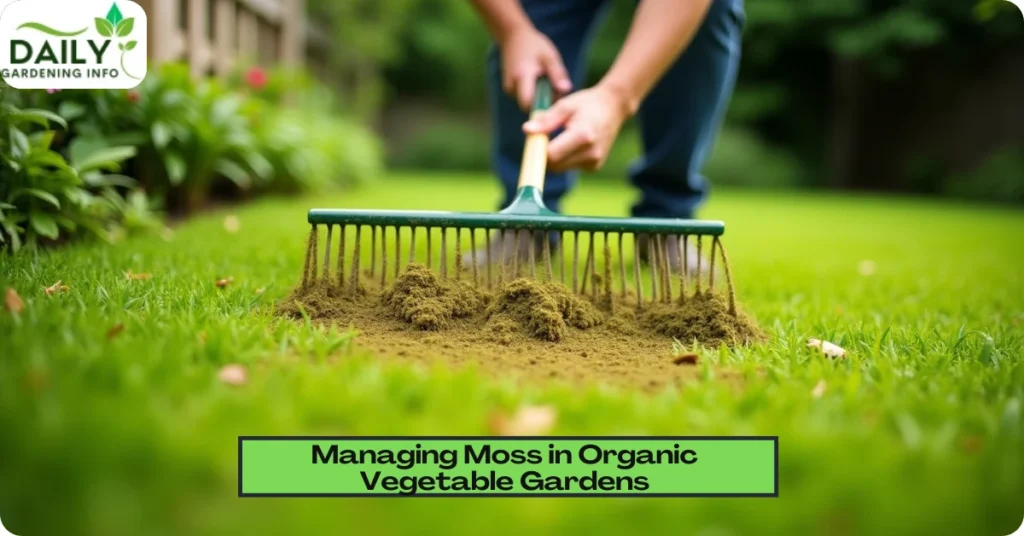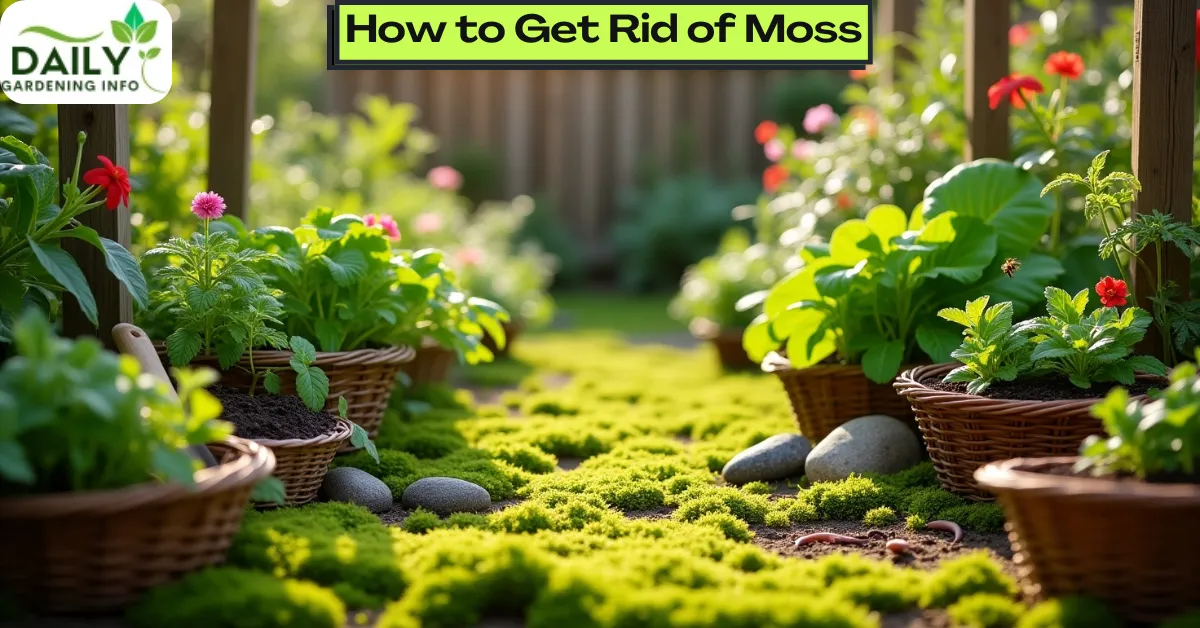Introduction
Moss growth in your lawn or garden can detract from its appearance and health, often overtaking grass or encroaching on vegetable beds. This persistent plant can indicate underlying issues that require attention. If you seek effective strategies for how to get rid of moss, this guide provides a thorough examination of its nature, causes, and removal techniques. By following these steps, you can restore your outdoor space to a pristine, thriving condition.
Defining Moss: Understanding the Plant
Moss is a small, non-flowering plant that forms dense, green mats in moist, shaded environments. Lacking true roots, it absorbs water and nutrients directly through its leaves, enabling rapid spread via spores. While moss may appear decorative in moderation, excessive growth often signals problems such as poor soil conditions or insufficient sunlight. Understanding its characteristics is essential for effective control.
Investigating Moss Growth: What Drives Its Spread?
Analyzing the Causes of Moss Proliferation
To successfully address how to get rid of moss, it is critical to identify the factors promoting its growth. Below are the primary reasons moss establishes itself in lawns and gardens:
- Inadequate Drainage: Soil that retains excessive moisture fosters moss development. Areas with clay-rich soil, compaction, or low elevation are particularly susceptible, with studies suggesting a 50% increase in moss prevalence under such conditions. Overwatering or heavy foot traffic exacerbates this issue by preventing proper water dispersal.
- Excessive Shade: Moss requires minimal sunlight—approximately 2-3 hours daily—while grass and most garden plants need 4-6 hours to thrive. Dense tree canopies, tall structures, or untrimmed shrubs create shaded zones where moss outcompetes other vegetation. Accumulated debris, such as fallen leaves, further enhances these conditions.
- Acidic Soil Conditions: Moss prefers soil with a pH below 6.0, a level at which grass struggles and many vegetables underperform. This acidity often results from organic decay (e.g., pine needles or leaf litter) or acidic runoff. Grass typically requires a neutral pH of 6.5-7.0, while vegetables such as tomatoes favor 6.0-6.8.
- Soil Compaction: Dense, compacted soil restricts air, water, and nutrient flow to plant roots, weakening grass or crops and allowing moss to dominate. This is common in high-traffic areas or neglected garden sections.
- Limited Air Circulation: Enclosed spaces with poor airflow—caused by dense plantings, fences, or buildings—retain moisture, creating an ideal habitat for moss. This can also encourage fungal growth, which often accompanies moss.
- Nutrient Imbalance: Soil deficient in essential nutrients like nitrogen, potassium, or magnesium cannot sustain healthy plant growth, leaving room for moss to take hold. Nutrient depletion may occur due to leaching from rainfall or inadequate fertilization.
Inspection Method: Examine your lawn or garden for soft, green patches, particularly in shaded, damp, or compacted areas. These observations will guide your moss management strategy.
Effective Identification Techniques
Strategies for Monitoring Moss Presence
- Seasonal Analysis: Moss growth often intensifies in spring and fall due to increased moisture and moderate temperatures (45-65°F). Document its seasonal patterns.
- Soil Moisture Assessment: Dig a shallow hole (approximately 2 inches) in affected areas. Persistent wetness indicates drainage issues requiring correction.
- Record-Keeping: Maintain a log of moss locations and interventions, such as increased sunlight exposure. Research indicates that enhancing light can reduce moss by up to 60%.
Eliminating Moss: Proven Removal Techniques
Manual Removal: Direct and Effective
Physical removal is a straightforward approach to begin moss removal. Consider these methods:
- Raking: Use a firm garden rake to extract moss from the soil surface. Divide the area into sections and rake in multiple directions to ensure thorough removal, taking care to minimize damage to grass or plant roots. Moss layers can reach an inch thick, suppressing underlying vegetation if not addressed.
- Optimal Timing: Perform this task in early spring or fall when the soil is moist and temperatures range between 45-65°F, facilitating easier extraction.
- Efficiency Aid: After raking, employ a leaf blower to remove loose moss debris, potentially reducing cleanup time by 30%, according to horticultural estimates.
- Dethatching: For lawns, utilize a dethatcher or specialized rake to clear dead grass and organic buildup. This process enhances soil aeration and water penetration, disrupting moss’s foothold. Annual dethatching is recommended.
Non-Chemical Solutions: Safe and Sustainable
- Vinegar Application: Combine equal parts water and white vinegar, apply to moss with a sprayer, and allow it to sit for 15-20 minutes before raking. This method suits small areas and is compatible with organic gardening.
- Baking Soda Treatment: Sprinkle baking soda over moss to dehydrate it and adjust soil pH. After 24 hours, remove the dead moss. Apply cautiously near plants to avoid excessive pH shifts.
- Hot Water Method: Pour boiling water over moss in non-vegetated areas, such as pathways. Once it browns, scrape it away. This is a simple, chemical-free option.
Chemical Control: Targeted Moss Eradication
For persistent moss, iron sulfate (ferrous sulfate) offers a potent solution. Mix 1-2 ounces per gallon of water and apply over 100 square feet. After 24 hours, when the moss turns brown, rake it out. Adhere strictly to product guidelines, especially near edible plants, to prevent soil contamination.
Managing Moss in Organic Vegetable Gardens
Protecting Your Organic Crops from Moss
If you cultivate organic vegetables—such as carrots, lettuce, or peppers—moss can indicate conditions detrimental to their growth, such as excessive moisture or acidity. Address it with these tailored steps:
- Enhancing Drainage: Incorporate sand or compost into garden beds to improve soil structure and prevent waterlogging. Raised beds, elevated 8-12 inches, are highly effective in consistently wet areas.
- Balancing Soil pH: Test soil with a kit; if the pH falls below 6.0, apply lime or wood ash (approximately a 1/4-inch layer) to reach 6.0-6.8, optimal for most vegetables. Recheck after 30 days to confirm adjustments.
- Increasing Sunlight: Trim overhanging branches or reposition shade-producing plants to ensure vegetables receive at least 6 hours of sunlight daily, a level that moss cannot tolerate.
- Manual Extraction: Carefully remove moss by hand or with a trowel, avoiding disturbance to vegetable roots. Dispose of it away from the garden to prevent spore dispersal.
Key Consideration: Nutrient-rich soil, fortified with compost or aged manure, supports vigorous vegetable growth, reducing moss’s ability to establish itself.

Preventing Moss Recurrence
Soil Optimization
- Soil Testing: Conduct annual tests to monitor pH and nutrient levels. If pH is below 6.0, apply lime at a rate of 40 pounds per 1,000 square feet, or add compost to enhance fertility.
- Aeration: Use a garden fork or mechanical aerator each spring to perforate soil, improving drainage and root access to oxygen.
- Water Management: Provide 1 inch of water weekly, applied deeply but infrequently, to maintain soil health without encouraging moss.
Maximizing Light and Airflow
- Pruning Practices: Trim trees and shrubs in early spring or late fall to increase sunlight penetration. Remove low-hanging branches that obstruct light.
- Airflow Improvement: Space plants appropriately and eliminate barriers to promote drying and deter moss.
- Reflective Enhancement: Incorporate light-colored mulch or stones to reflect sunlight into shaded areas, further discouraging moss.
Ongoing Maintenance: Ensuring Long-Term Success
- Mowing Standards: Maintain grass at 2-4 inches in height, mowing weekly during the growing season. Avoid cutting too short, which stresses grass and invites moss.
- Fertilization Schedule: Apply slow-release fertilizer to lawns in spring and summer; for gardens, use organic compost or manure to sustain nutrient levels.
- Irrigation Timing: Water between 5-9 AM to minimize evaporation and reduce fungal growth risks, using a rain gauge to track totals.
Strengthening Vegetation: Outcompeting Moss
- Overseeding Lawns: After moss removal, distribute grass seed suited to your climate to thicken turf and prevent regrowth.
- Soil Enrichment: Add compost or sand to garden beds to improve texture and nutrient content, fostering robust plant growth that resists moss.
Conclusion: Achieving a Moss-Free Landscape
Eliminating moss from your lawn and garden requires diligence, but the results—a healthy, attractive landscape—are well worth the effort. By understanding its causes, applying effective moss removal techniques, and maintaining optimal conditions, you can prevent its return. Begin today: assess your property, remove existing moss, and implement consistent care practices. With these measures, your lawn and garden will flourish, free from moss’s interference.
What is moss, and why is it a problem for the lawn?
Moss is a small, non-vascular plant that thrives in damp, shady conditions. It can be a problem for lawns because it competes with grass for space, light, and nutrients, leading to patchy and unhealthy grass growth.
Can I prevent moss from growing in my lawn
Yes, you can prevent moss by maintaining healthy grass, ensuring proper drainage, increasing sunlight exposure, and regularly aerating the soil.
Is it safe to use moss killers around pets and children?
Some moss killers are safe for pets and children once dry, while others may contain harmful chemicals. Always check the label for safety instructions and keep pets and kids away during application.
How long does it take for a moss killer to work?
The time it takes for a moss killer to work varies by product. Generally, you may see results within a few days to a couple of weeks. Follow the product instructions for specific timelines.
Will removing moss damage my grass?
If done carefully, removing moss should not damage your grass. Use a gentle raking technique to minimize harm to the grass underneath.
